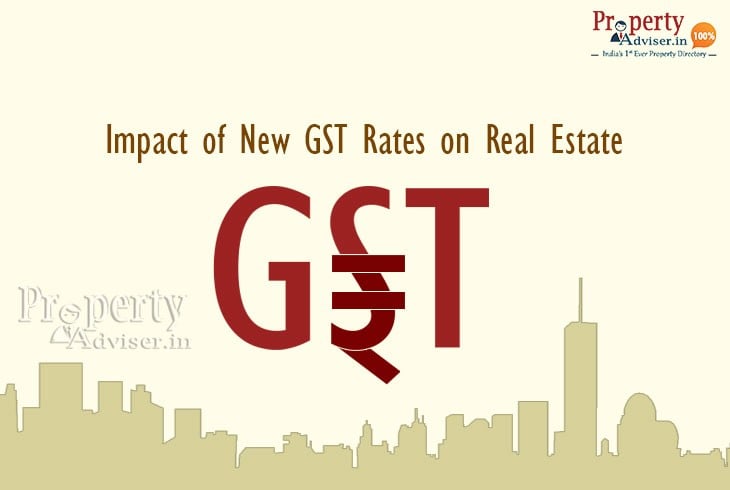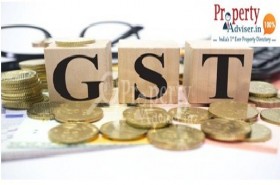On its 33rd meeting, the GST council decided to implement new transition plans for GST on flat purchase. This plan is applicable for builders of under-construction buildings, as they get to choose the GST in real estate between the updated rates without the tax credit and an option to remain with the previous plan.
Current Situation
At present for GST in real estate, unfinished housing projects are getting higher GST rates, but with input tax credit benefits. As an advantage, it, in turn, reduced the final GST outcome by compensating the taxes already paid on raw materials.
Back then, the builders were already aware of the GST rate in real estate, as certain projects were at different construction stages. So, developers used to stock up raw materials beforehand. According to the present rule, they will now be eligible for ITC benefits.
Our PropertyAdviser.in team always keeps buyers and builders up-to-date with the latest happenings in the real estate sector.
What Is the Impact of GST on the Real Estate Sector?
The GST Council, headed by the Finance Minister Arun Jaitley, announced the new GST in real estate as developers can decide whether they want to pay high-priced rates on raw materials with input tax credits (ITC) or fewer charges for under-construction projects without any added benefits.
In general, the impact of GST in real estate means that the builders can select either they want to pay 12% with ITC benefits for non-affordable houses or 5% for unfinished houses with tax benefits. The council has further decided that for construction projects, 80% of materials like gravel, bricks, hardware, etc. must be procured from certified dealers.
Similarly, for affordable housing developers can pick to pay 1% without tax allowances or 8% including tax benefits. It is said that this new tax plan without input tax credits is being applied to housing projects that launched construction from on or after April 1, 2019.
Revenue Secretary Ajay Bhushan Pandey said the government will see no revenue loss because of the new GST in real estate initiative for under-construction projects. He said the rates will be calculated by considering certain points like the construction stage of the project, the ratio of commercial to a residential building, invoices, and so on.
This latest news on GST in real estate brought a positive vibe for the builders and buyers. Real estate is something that is always considered as a long-term investment. Hyderabad is one such place that never lets down its investors.
Registration and Stamp Duty in Real Estate
Registration and stamp duty on real estate have continued to remain in place as state government taxes subsequent to GST. These fees may differ from state to state and vary in the same state itself from circle to circle.
In the era of GST on land registration or property registrations and stamp duties it will still apply in respect of ready to move and under construction properties in India, and GST will only apply in respect of under construction properties sold.
Latest Update of GST on Real Estate
Nearly around 15 of the next month, the 44th GST Council meeting 2021 is expected. At the next GST Council, the Ministry of Finance will be pushing forward the agenda for the fusion of the GST rate plates.
News reports indicate that rates of 12% and 18% can be fused to a single intermediate level to decrease the number of GST rates. It is stated by the Finance Commission that both taxpayers and government win the move. The major problem created by the inverted tax structure can be addressed.
In addition, if the decision is taken, consumers will be relieved from products currently taxed at GST rate of 18%. A decrease in GST rates for most finished products increases consumption. It will also help revive the country's economy in a much-needed way. In addition, the higher the consumption, the better the revenue gain. However, there is also no empirical sign that directly correlates the rationalization of GST rates with the driving effects of economic growth.
The government has successfully pushed out defaulters, fraudsters, and unlocked fake billing scams under GST in the last few months, and taken several preventive measures on tax evasion. The same can be seen in the constant increase in the monthly collection of GST revenue over the past two months.
The conditions for a major overhaul of the GST rate are therefore conducive. There are currently 4 major GST rates – 5%, 12%, 18%, and 28% – apart from 0%, 1%, and 3%. Therefore, the GST rate is currently 4%. Because of the multiple tax rates, some raw materials fall in higher tax rates than their respective finished goods, which leads to lower tax rates. It results in an inverted tax structure and calls for unnecessary GST refund problems. The 44th GST Council meeting 2021, which will take place in March , will soon provide clarity.
In the past, a two-slab GST rate structure also was recommended by the GST Council Revenue Enhancement Committee. In contrast, at the 38th GST Council meeting on 18 December 2019, the GST Council establishing a special committee to consider the possibility of a three-pronged GST structure. Exactly a year ago the Hon'ble Finance Minister announced that in the future the revision of the GST rate would become an annual exercise.
As a result, since 2017, the GST rates have been least revised or rationalised in 2020. Many representatives have requested a rate reduction in the pandemic affecting several industries. The next GST Council meeting 2021 is also expected to take this on board. In the Union Budget 2021, this matter had to be submitted to the GST Council, and no references or suggestions were made.
It is appropriate to note what had been said in the 2018 report by the International Monetary Fund (IMF) on India's existing GST rate structure. The team noted that India's GST environment may have high compliance and administrative costs as a consequence of the multiple rate structures and other aspects. Furthermore, a double-rate structure with a generic lower rate and an additional higher rate for a few selected items has been recommended. It can, in turn, be gradual and maintain revenue neutrality.
Probably as before, the next GST meeting can be held. Much more items could be discussed on the agenda, but the main change in GST rates will continue to be highlighted.
Looking for Apartments for sale in Hyderabad? Our team is here to help find you the best home as per your necessities. Get in touch with PropertyAdviser.in to know more details on real estate.
By: Shailaja K

















